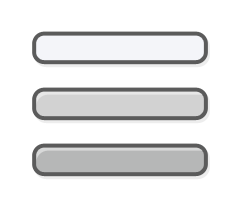Install Steam
login
|
language
简体中文 (Simplified Chinese)
繁體中文 (Traditional Chinese)
日本語 (Japanese)
한국어 (Korean)
ไทย (Thai)
Български (Bulgarian)
Čeština (Czech)
Dansk (Danish)
Deutsch (German)
Español - España (Spanish - Spain)
Español - Latinoamérica (Spanish - Latin America)
Ελληνικά (Greek)
Français (French)
Italiano (Italian)
Bahasa Indonesia (Indonesian)
Magyar (Hungarian)
Nederlands (Dutch)
Norsk (Norwegian)
Polski (Polish)
Português (Portuguese - Portugal)
Português - Brasil (Portuguese - Brazil)
Română (Romanian)
Русский (Russian)
Suomi (Finnish)
Svenska (Swedish)
Türkçe (Turkish)
Tiếng Việt (Vietnamese)
Українська (Ukrainian)
Report a translation problem































First off: I don't understand what people are saying about "black lines" and that your guide is bad.
I know what black lines they speak of, it is completely settings- and hardware based, aswell as monitor setup. Has nothing to do with fissures, just coincidence.
I've seen black lines where no fissures were present, i've not seen black lines where i scooped up big hauls of LTD's ... people are just weird.
Anyways, your guide is one i've sent to friends before, especially the video, that this was used in.
So when i saw people commenting you're "wrong", i just wanted to chime in and say:
No you're not. This guide is supreme.
Just as a small token of gratitude for all the work your guide has saved all of us.
Fly dangerously, CMDR o7
I haven't played E:D in a long time, but I seem to recall that I used to bring about 2/3 of cargo space worth of limpets.
I used to jettison limpets when needed, in order to make room for minerals... limpets are dirt cheap, after all.
However, keep in mind that I used to mine with my cutter, which had lots of room to spare.
Right now I don't recall the ratio of limpets I used when mining with my krait... might've been the same, idk.
Just carry as many limpets as you want and toss them if you need space.
I have made 2tr core mining so far, and the color system just doesnt work properly, but the shape does. You want the thick, almost tangled, mess of black lines and you need to have night vision turned on.
And as mentioned earlier, from far away you will only see a small bit of thick black line. Closer up it will get thicker and ticker, and color shifts more into the green the closer you get. Though at that close you can usually spot the fissures.
Look for the brightest asteroids when pulsewave, all core asteroids are exactly the same shape, never will different shaped asteroids be cores, and then go towards any you find black lines on. Pop a prospector limpet to be sure, or look for fissures up close.